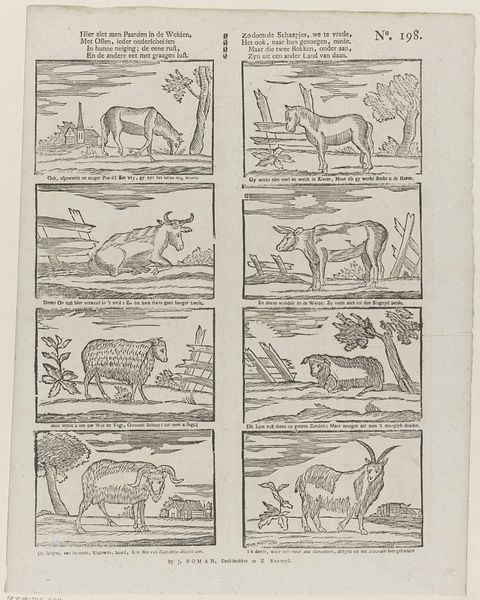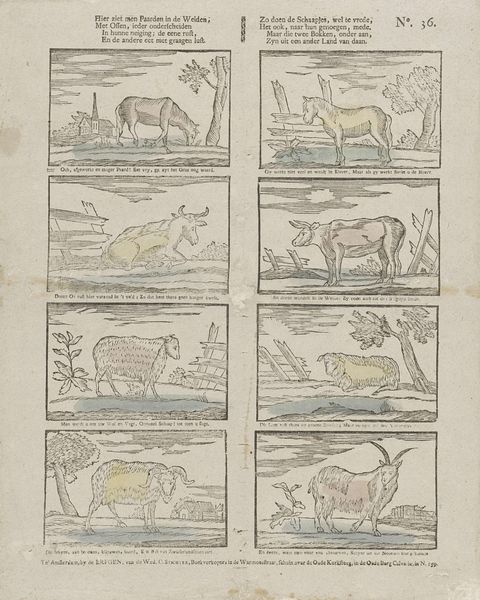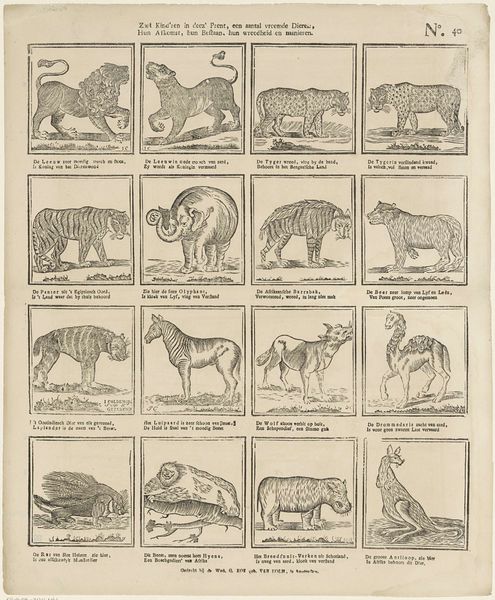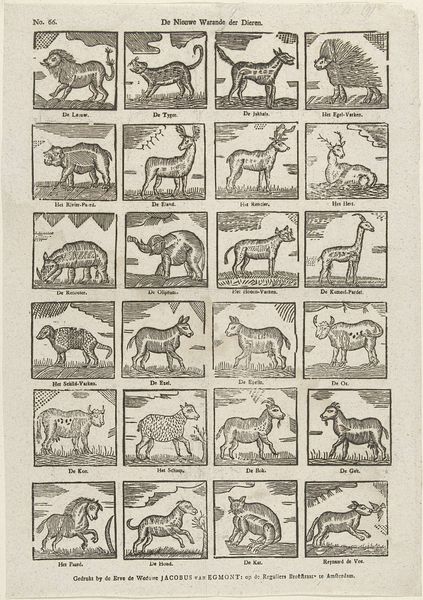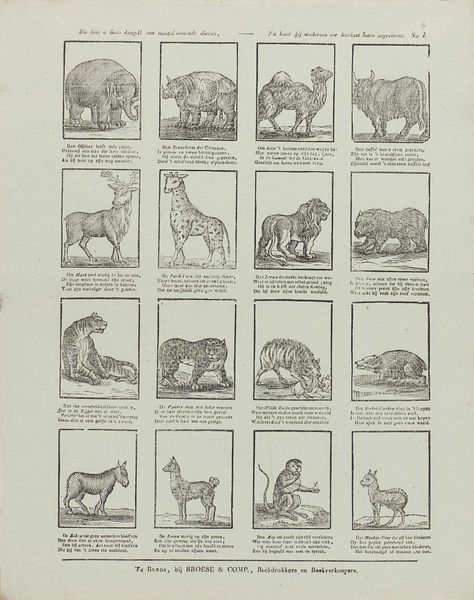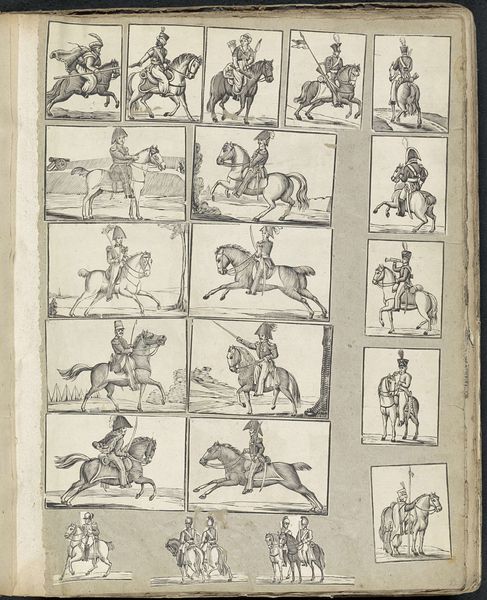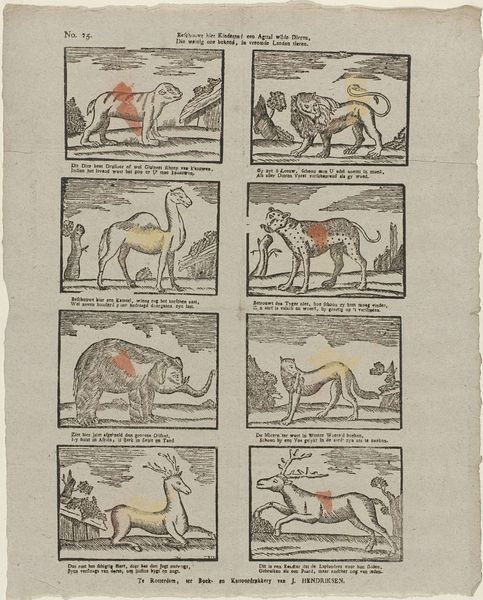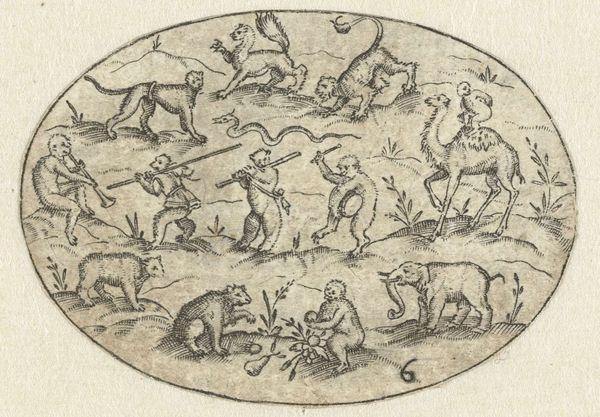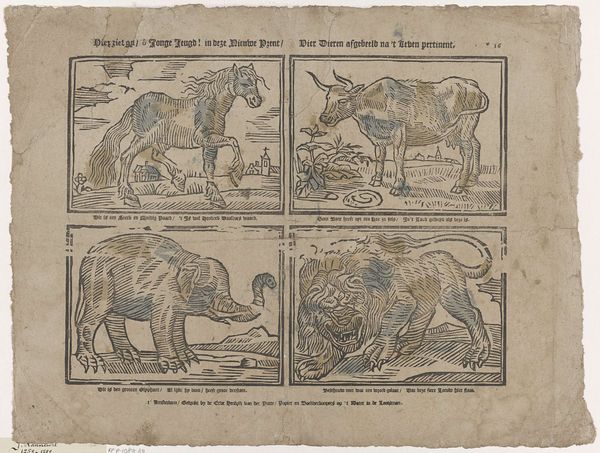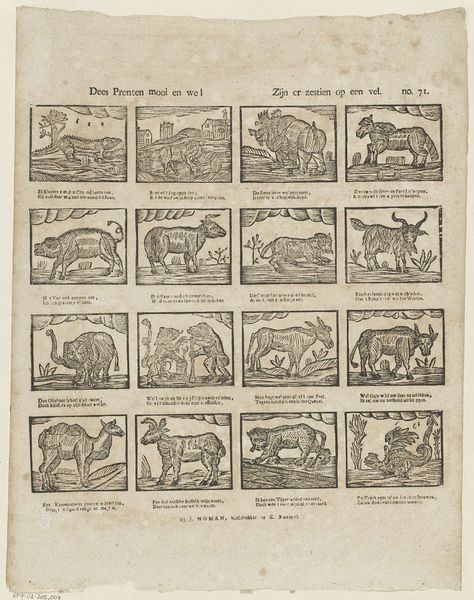
Deez' dieren, toonen zich als leevend voor uwe oogen, / Elk soort naar zynen aart, beschikking en vermogen; / Op dat ge, ô kleene jeugd! leer' kennen, dat uw' staat / Als mensch, het nuttigst dier nog ver te boven gaat 1806 - 1830
0:00
0:00
graphic-art, print, engraving
#
graphic-art
#
narrative-art
# print
#
genre-painting
#
engraving
Dimensions: height 399 mm, width 318 mm
Copyright: Rijks Museum: Open Domain
Curator: This unassuming print, currently residing at the Rijksmuseum, offers a fascinating glimpse into early 19th-century Dutch culture. Its full title is "Deez' dieren, toonen zich als leevend voor uwe oogen…," and it was created sometime between 1806 and 1830. Editor: My first thought is the starkness of it – the black lines on the beige paper, it creates a feeling of pedagogical simplicity almost like flashcards meant for instruction. A moral lesson via the animal world, I presume? Curator: Precisely! Created by Johan Noman, this engraving utilizes simple depictions of various animals, arranged in square panels, each accompanied by text. It wasn’t just a representation of animals, but served as a moral and educational tool, aiming to instruct "kleene jeugd!"– the small children – about the relative worth and character of beings. It also clearly asserts mankind as superior. Editor: It's interesting how the arrangement of the animals almost becomes a social hierarchy reflected in its layout. Did Noman intend to also reinforce a hierarchy by presenting them in a grid, a rigid display that subtly guides perceptions on who gets prominence through position and, literally, through being at the 'top' versus the bottom. The use of vernacular is particularly salient given we know print and dissemination of knowledge had distinct class stratifications. Curator: It's very possible and this also fits neatly within larger colonial projects of naturalizing socio-political categories as innate differences of being. He contrasts animal behavior with implied human virtues. The dog, the horse, the cow—these aren’t merely animals, they represent traits worthy of emulation or scorn, within a specific socio-economic framework. And how these 'lessons' trickle down into domestic education, particularly shaping ideas in emergent adulthood is particularly striking. Editor: It truly prompts us to question how seemingly innocuous images can reinforce dominant ideologies, quietly molding perception and self-conception, then and even today. Curator: Indeed. By examining the role of prints like this one, we start to peel back the layers and unravel how societal structures get reinforced through artistic and cultural productions aimed to form subjects from early age.
Comments
No comments
Be the first to comment and join the conversation on the ultimate creative platform.
